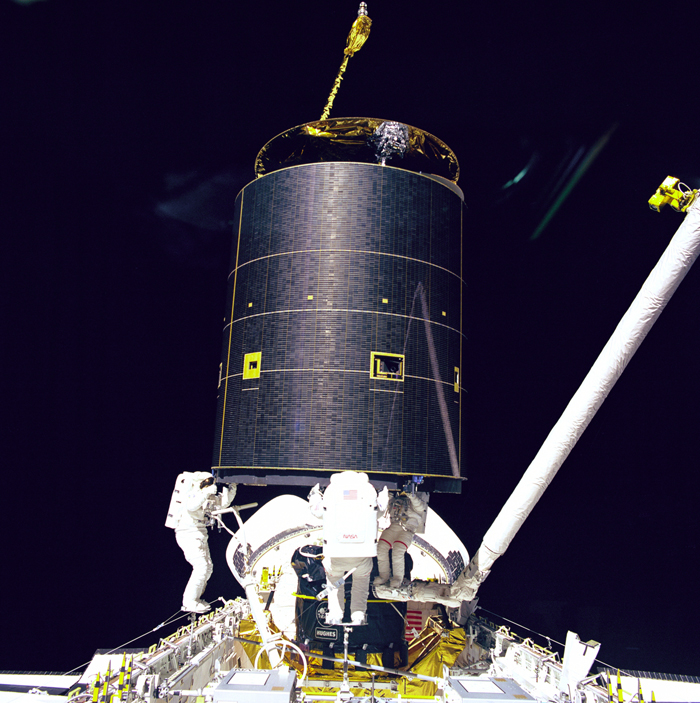Space History Photo: Three Crew Members Capture Intelsat VI

In this historical photo from the U.S. space agency, three crew members of mission STS-49 hold onto the 4.5 ton International Telecommunications Organization Satellite (INTELSAT) VI after a six-handed "capture" was made minutes earlier during the mission's third extravehicular activity (EVA).
From left to right: Mission Specialists (MS) Richard J. Hieb, Thomas D. Akers, and Pierre J. Thuot. The three prepare to attach the capture bar which is tethered to Hieb. Thuot is positioned on the Remote Manipulator System (RMS) arm, from which he had made two earlier unsuccessful grapple attempts on two- person EVA sessions.
Ground controllers and crewmembers agreed that a third attempt, using three mission specialists in the payload bay (PLB) was the effort needed to accomplish the capture feat. Behind the three astronauts is the vertical perigee stage which will be attached to the Intelsat VI prior to its release from the PLB.
Each weekday, SPACE.com looks back at the history of spaceflight through photos (archive).
Get the Space.com Newsletter
Breaking space news, the latest updates on rocket launches, skywatching events and more!
Join our Space Forums to keep talking space on the latest missions, night sky and more! And if you have a news tip, correction or comment, let us know at: community@space.com.

The National Aeronautics and Space Administration (NASA) is the U.S. government agency in charge of the civilian space program as well as aeronautics and aerospace research. Founded in 1958, NASA is a civilian space agency aimed at exploring the universe with space telescopes, satellites, robotic spacecraft, astronauts and more. The space agency has 10 major centers based across the U.S. and launches robotic and crewed missions from the Kennedy Space Center in Cape Canaveral Florida. It's astronaut corps is based at the Johnson Space Center in Houston. To follow NASA's latest mission, follow the space agency on Twitter or any other social channel, of visit: nasa.gov.









